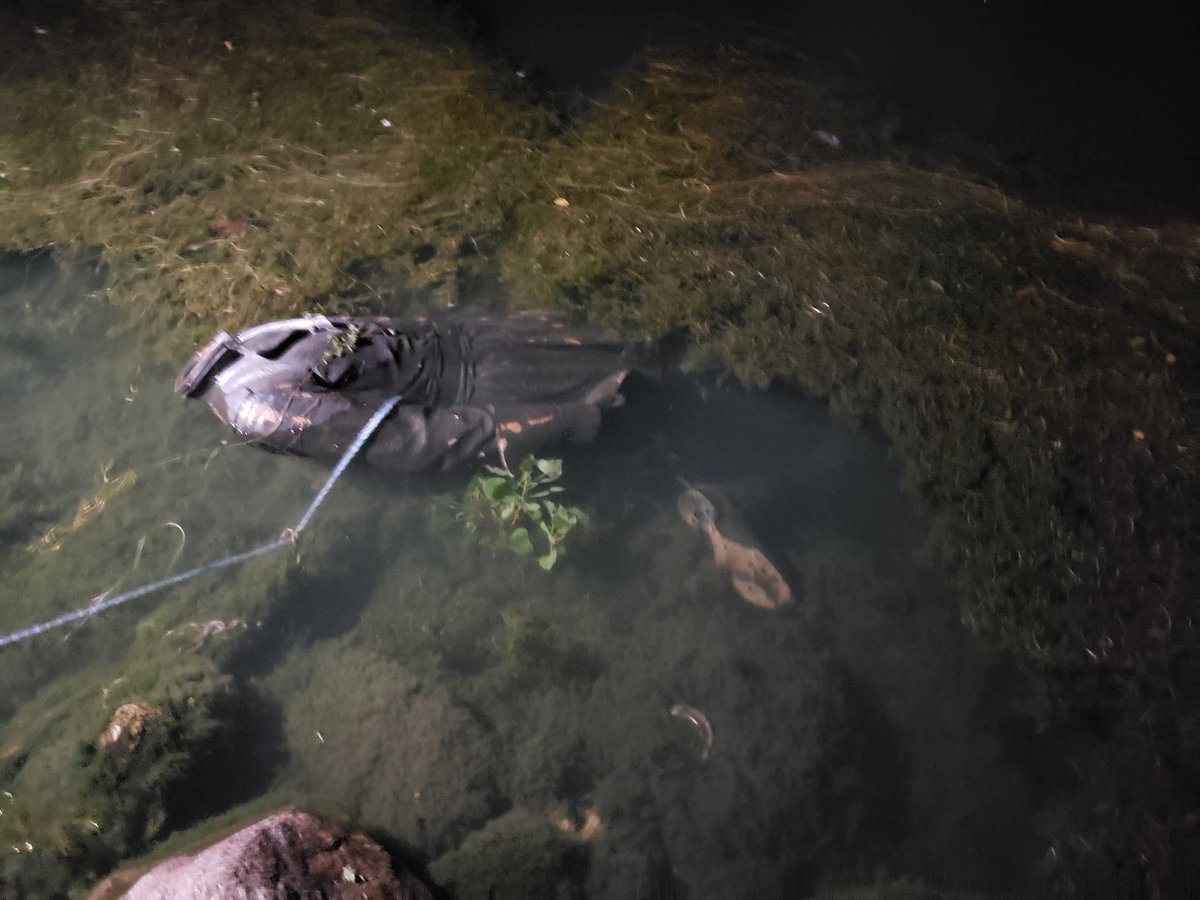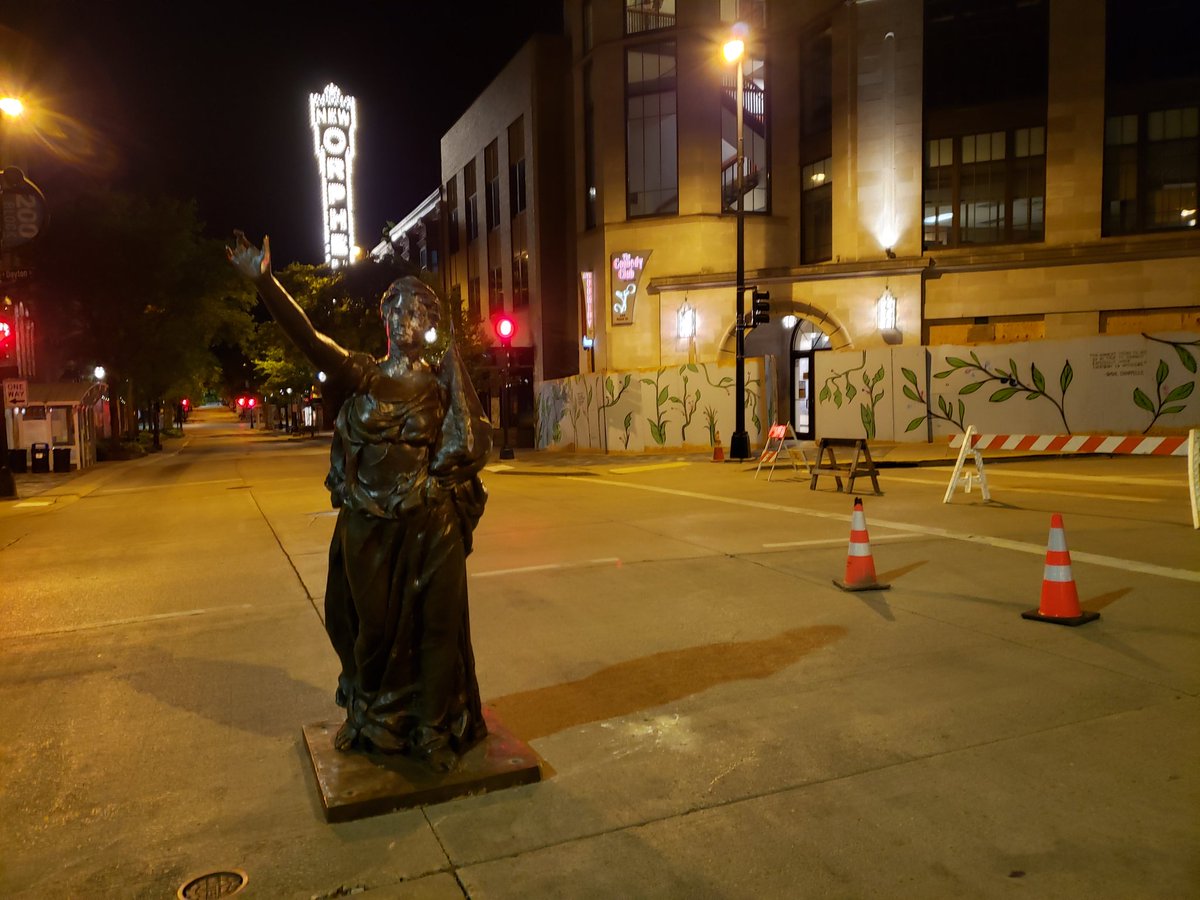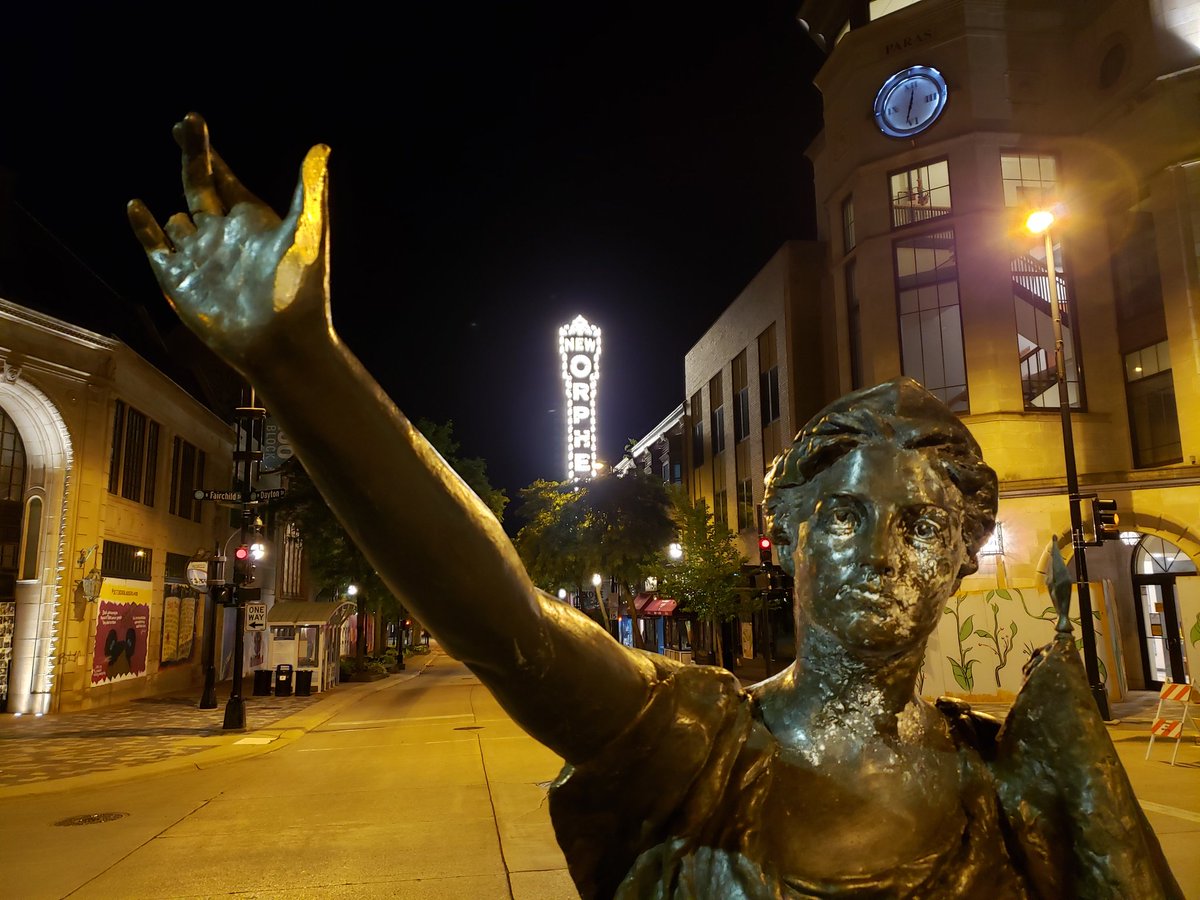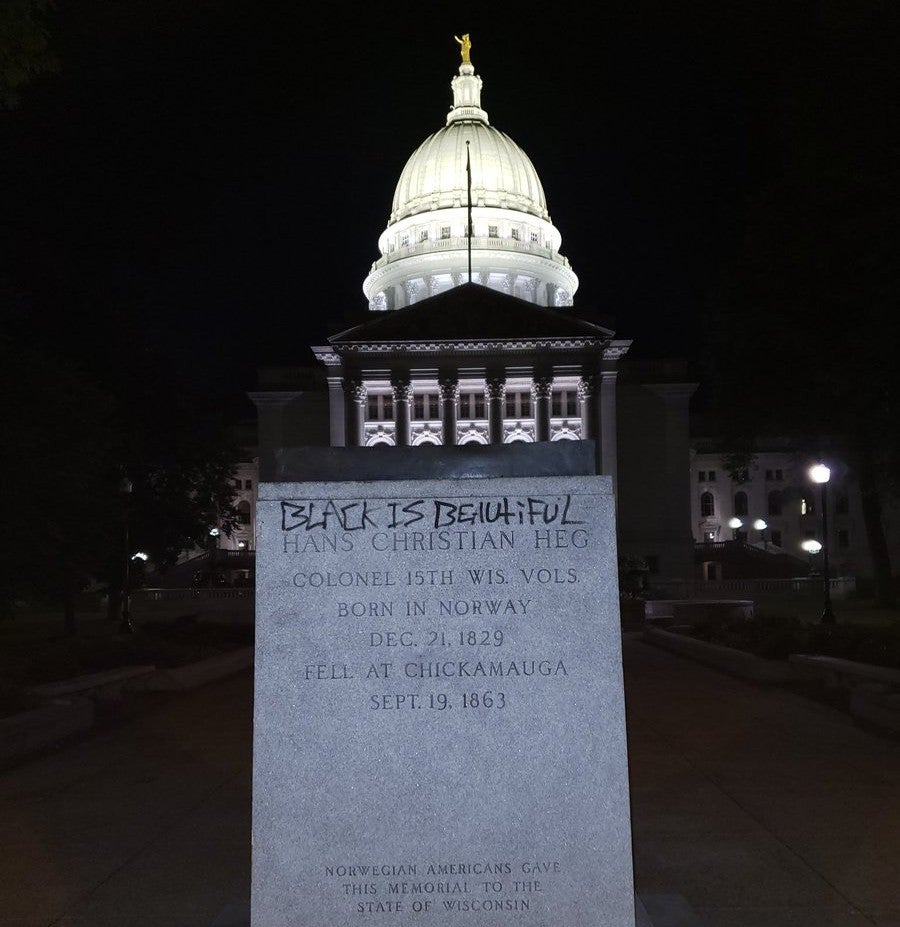Two statues were pulled down by protesters and a state senator was attacked during a demonstration around the state Capitol in Madison on Tuesday night.
The protests followed the arrest of a Black man who was at a nearby restaurant with a megaphone and a baseball bat. Video released by the Madison Police Department showed the man talking through the megaphone Tuesday while walking near the restaurant’s outdoor patio. He goes inside and said he was “disturbing” the restaurant. After leaving the restaurant, officers arrested the man.
In videos of the arrest, the man can be heard asking repeatedly: “Why are you arresting me?”
Stay informed on the latest news
Sign up for WPR’s email newsletter.
The Milwaukee Journal Sentinel reported that late Tuesday Democratic state Sen. Tim Carpenter was assaulted after taking a video of protesters.
In a tweet, Carpenter said he was punched and kicked in the head, neck and ribs by a group of eight to 10 people.
Gov. Tony Evers released a statement Wednesday morning denouncing the attack against Carpenter.
“I want to be clear: violence against any person — whether in the middle of the street in broad daylight, at home trying to sleep, going for a run, or happening upon a protest as was the case last night — is wrong,” Evers wrote. “Any single act of injustice against one person is less justice for all of us, and the people who committed these acts of violence will be held accountable. My thoughts are with Sen. Carpenter who was among the individuals attacked last night and wish him a quick recovery.”
Evers also acknowledged the murder of George Floyd, Breonna Taylor, and “the many Black lives taken before them” and the importance of creating an “equitable, just, and fair state and country.”
The two statues — the Forward statue, located on the west entrance of the Capitol at the end of State Street, and a statue of Col. Hans Christian Heg, located on the east entrance of the Capitol at the King Street corner of the square — were removed from their pedestals.
Protesters took the Heg statue and dumped it in Lake Monona, almost a half-mile from where it was toppled.

The Forward statue was knocked from its pedestal and as of early Wednesday morning, was about a block from the state Capitol in the middle of the street.


Protester Ebony Anderson-Carter told the Wisconsin State Journal that “the anger and destruction was spurred in part because state and local officials refuse to listen to protesters’ calls for change.”
She said even though the “statues stood for good causes and movements, those in power are not taking that same stand with the Black Lives Matter movement.”
Early Wednesday morning, protesters continued to face off against police about a block from the Capitol. Officers played a recorded message on a loop telling the crowd it was an unlawful gathering. The crowd responded with chanting.
Here’s a distant view of the standoff happening right now about a block from the Wisconsin Capitol. Police are playing a recorded message on a loop telling the crowd they’re an unlawful gathering. The crowd is chanting. pic.twitter.com/YSlCls6xSP
— Shawn Johnson (@SJohnsonWPR) June 24, 2020
Guy with the megaphone in this standoff with police just told them that if police leave, they’ll leave. Police backed away about a half block. He says that’s not good enough, they need to disperse. So now it’s a standoff from about a half block away. pic.twitter.com/oMj3v7s2nH
— Shawn Johnson (@SJohnsonWPR) June 24, 2020
According to an MPD incident report, pepper spray “was deployed from within the State Capital (sic) building to repel individuals who were attempting to force entry.”
Eventually, the crowd thinned out and police left the area.
Evers said the state is assessing the damage, and that both statues have been recovered. He also said he was prepared to call in the Wisconsin National Guard to protect state buildings and infrastructure in the future.
Tuesday’s unrest followed weeks of mostly peaceful protests after the death of George Floyd while in police custody in Minneapolis.
Statues Have Stood Near Capitol For Decades
The current Forward statue is a bronze replica of the original Forward statue, which was initially commissioned in 1893.
Dan Stephans, the retired chief state architect, gave a lecture in July 2017 on PBS Wisconsin’s “University Place” about the sculptures and murals around the Capitol and talked about the history of the Forward statue. He said sculptor and Madison native Jean Miner created the first statue in 1895. The original statue was moved indoors to preserve it and taken to the Wisconsin Historical Society in 1998, according to the society’s website.
WisContext reported on Stephans’ lecture:
Jean Miner designed “Forward,” an allegorical bronze statue of a woman raising her right arm as a symbol of progress. Completed at the World’s Columbian Exposition, the statue was originally placed outside the east entrance of the previous Capitol building in 1895. It was moved to a position outside the North Hamilton St. entrance of the new Capitol building in 1916 and remained in place there until 1995. After 80 years of weathering, the original statue was restored and placed inside the Wisconsin Historical Society building on the University of Wisconsin-Madison’s Library Mall in 1998. Often confused with “Wisconsin,” a replica was cast and placed in front of the west entrance of the Capitol facing State Street. Miner was born in Menasha and remained active in sculpting until her death at 101.
The Heg statue has also been a fixture at the Capitol for almost a century. It was placed near the Capitol in 1925 and was a gift of the Norwegian Society of America.
In a September 2015 broadcast of PBS Wisconsin’s “University Place,” University of Wisconsin-Madison Scandinavian Studies Professor Julie K. Allen shared that Heg was the commander of the 15th Wisconsin Volunteer Regiment, which included Norwegian and Swedish immigrants and was the only non-English-speaking regiment to serve in the Union Army during the Civil War. Heg was a resident of Muskego and “was active in the anti-slavery movement and the early Republican Party. He died in 1863 after being wounded at the Battle of Chickamauga in northwest Georgia,” WisContext reported in 2016.
Editor’s note: Shawn Johnson, David Hyland and the Associated Press contributed to this report.
Wisconsin Public Radio, © Copyright 2025, Board of Regents of the University of Wisconsin System and Wisconsin Educational Communications Board.
